There are some sports that are unbreakably linked to certain countries. These sports form part of the national character, and success on the field of play can elevate even the smallest nations to glory on the global stage.
New Zealand are the current Rugby World Cup holders, and a Kiwi’s love of the sport is embedded in his DNA. To any Cuban, baseball is as much a source of pride as a revolutionary beard or an ice-cold mojito.Tell the Japanese that their hallowed sumo looks a bit silly and you might have to issue a giant-sized apology
When settling into a new country, it’s probably best you don’t insult the local pastime, but set about learning it with the same vigour as you do the language.
Much like national cuisine, a country’s sporting tastes can be a window into history as well as the national psyche. Jamaica’s cricket craze reflects the island’s colonial past whilst Mongolia’s archery enthusiasts keep alive a tradition as old as Genghis Kahn.
So when packing to start a new life abroad, remember to pack your running spikes, racing saddle, boxing gloves or cesta.
Sepak Takraw – Malaysia
Similar to volleyball, Malaysia’s national sport is also popular across South East Asia. There is evidence of the game being played as early as the 15th century, with it even being responsible for the throne changing hands.
A spat between sepak takraw players, one of whom happened to be the prince, lead to executions, attempted murder, accusations of treason and eventual exile for the sporting prince.
Matches today are usually more controlled affairs: teams of three work together to control a lively rattan ball before returning it over an elevated net. Points are scored by forcing the opposing teams to lose control of the ball or commit foul plays.
So far, this sounds just like volleyball. However, sepak players are not permitted to use their hands. Instead only their feet, knees, chest and head are allowed to touch the ball.
The game is spreading outside of Asia, with leagues running in America, Canada and Japan. The sport is still dominated by Asian nations, with Thailand scooping every medal at the 2015 world championships.
Hornussen – Switzerland
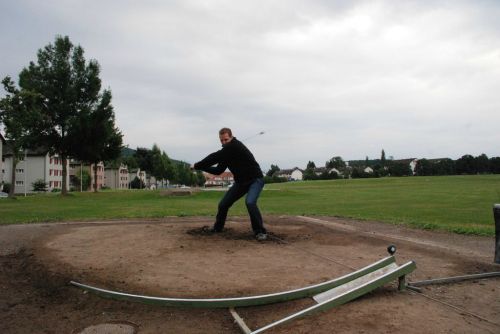
© David Haberthür
New residents to Switzerland might be forgiven for mistaking the nation’s favourite sport for some sort of countryside protest. A field full of excited looking Swiss people waving oversized placards can’t really look like anything else.
Hornussen is not an easy game to understand at first glance. The ‘protesters’ are actually the fielding team, bravely attempting to catch the speeding “hornuss” or hornet. This hornet is actually a solid ball, which reaches speeds of 300 km per hour and covers a range of 300m before speeding bullet-like at the placard-waving fielders.
The pitching team takes it in turns to strike the hornuss with an implement that is somewhere between a fishing rod and a golf club.
Originally played between farming villages, the game is still closely tied with a tradition of drinking and gambling. Fortunately the tradition of mass rioting sparked by disputed results has largely been replaced by official referees.
If being stung by a lightning-fast hornet-ball isn’t your idea of fun, hornussen is a popular spectator sport. Pack up a picnic and meet your new neighbours whilst watching this truly unique sport.
Ga-ga – Israel
Israel’s official national sport is football, but ga-ga holds a special place in the national heart, being popular in schools and summer camps. The sport has been exported around the world and is rapidly coming into the mainstream in America and Australia.
Ga-ga is what would happen if Mad Max’s Thunderdome were crossed with dodgeball. Players can compete one-on-one, in teams or in a messy free-for-all with unlimited players. All bouts take place in a walled off ‘pit’, which can vary in size depending on the number of players involved.
The bout starts with players holding on to the pit walls. A ball is dropped in the centre and must bounce three times before the players charge for it. Once captured, the possessing team can use the ball to strike the lower legs of their opponents, scoring points for each blow landed.
A rapid game with no room to hide from bouncing balls, ga-ga is popular with youth groups. Israel’s early years saw Jewish youngsters establish farms and towns, living in Kibbutz communities where many first played ga-ga.
The game is not just fun, put a key part of Israeli identity.
Pesapallo – Finland
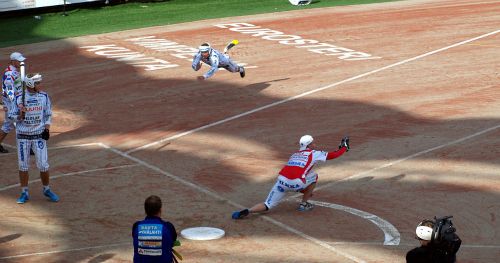
© Santeri Viinamäki
Literally meaning ‘nest ball’, Pesaballo is a bat and ball sport similar to British rounders or baseball. Invented in 1920 by a Finnish Olympian, the game is less about physical prowess as the clever use of tactics and gameplay.
Nine fielding players seek to catch batters out, or to ‘run’ them out between bases. The 12 batting players take the plate, much like in baseball, but rather than a ball pitched straight towards them it goes straight up above them.
This gives the batter more control over the ball’s trajectory, allowing him to direct the fielders to particular areas of the field. After striking the ball, batters must run to a series of bases through a zig-zagging course.
Pesapallo is slowly breaking out of its Northern European home, with a team from Australia competing in the world cup competition. At home the game experienced a slump in the early 2000s in the wake of a match fixing scandal, though pesapallo is currently enjoying a revival.
Amateur teams run throughout the country, catering for men, women and children, making it fun for all the family.
Camel Racing – United Arab Emirates
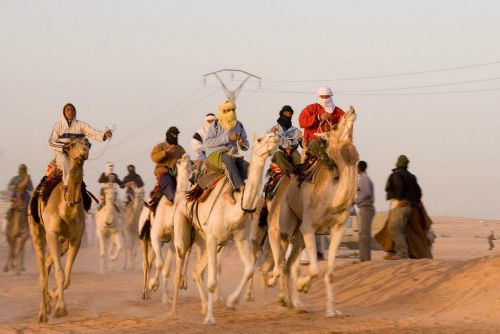
© Naoll
For as long as man has domesticated beasts of burden, we’ve been strapping ourselves to their backs and racing them. The ships of the desert might not be as graceful as a thoroughbred stallion, but we’ve still managed to race them.
Camel racing is popular in Afghanistan, Pakistan and Sudan, but in the Emirates, it’s not human riders but robot jockeys atop the camel’s hump.
Many Gulf states still allow owners to race their camels with small children as jockey. It has been estimated that between 5,000 and 40,000 children have been trafficked to ride in the competitive races. UAE banned the use of jockeys under the age of 15 in 2009, paying compensation to former child racers.
Races quickly slowed down when larger, heavier jockeys took their place in the saddle. Then someone in the super-rich oil state decided to let technology do the work.
Robotic riders now take the reins as camels stampede around the track at speeds of up to 65km per hour.
A high status sport, with big gambling stakes, race meets are as much about catching a glimpse of the rich and powerful as watching the action on the track.
Kabbadi – Bangladesh
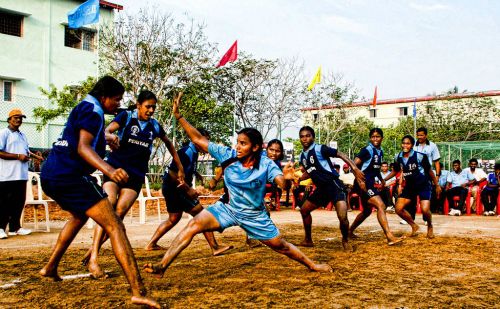
© Arivazhagan89
Kabbadi is the fast-paced, go-anywhere, play-anywhere game from Southern India. With origins in group hunting techniques and inter-village warfare, the sport is wildly popular, even boasting the Hindu god Vishnu among its fans.
The game requires no equipment, just an open space and a good set of lungs. Players line up on either side of a 10m by 13m pitch, attacking ‘raider’ players take a deep breath and cross the centre line to ‘tag’ defending players.
The raider must chant ‘kabbadi, kabbadi’ and not take another breath until returning to his home half. If he does, he’s out. If a defending player can’t return his take before the raider escapes, they’re out.
It’s simple, requires fitness and, with full-contact permitted, is also physically taxing. These qualities, along with the lack of need for equipment, made the game popular with military forces. British troops in Afghanistan learned to play the game from Gurkha and Afghan allies, bringing the sport back to the UK.
The World Kabbadi League, founded last year, means the sport is definitely spreading out of Asia.
Pato – Argentina
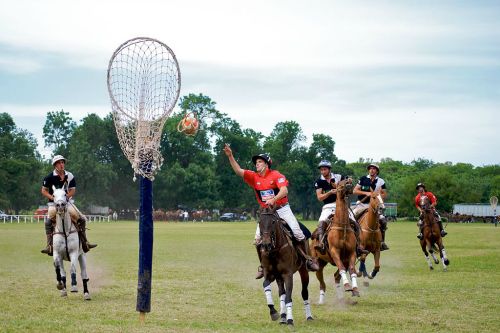
© Beatrice Murch
It might seem odd that a game played on horses is named after a bird (‘pato’ means ‘duck’ in Spanish), but the origins of Argentina’s national sport are not as refined as its modern day image.
The sport was first played in 1610 as ranch hands tossed a live duck over the fields between their farms. The first team to carry the duck back to their farm is declared the winner. The duck never wins.
Matches could descend into knife fights and may lives were lost under the stampeding hooves. So rowdy were the games that Catholic priests campaigned for players killed in the action to be denied a Christian burial.
The modern game resembles a mix of basketball and polo. Players wrestle and fight to control a ball fitted with handles before posting it through a goal at the end of the pitch.
It’s rare now for games to end in death or injury; a match is more likely to involve champagne, as the sport proves popular with Argentina’s upper classes.
Jai Alai – Basque Country
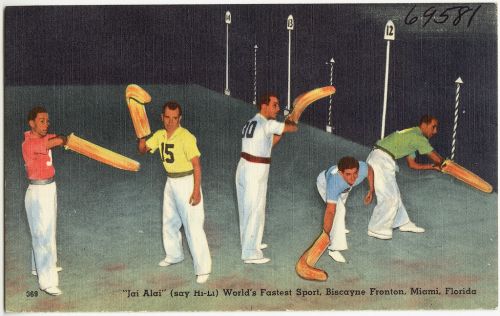
© Boston Public Library
Good pictures of Jai Alai are hard to find: hardly surprising as it is regarded as the world’s fastest game. The goatskin ball can reach speeds of 302 km per hour, which is terrifying considering that the game is played indoors.
Players aim to catch the ball in giant wicker scoops known as ‘cesta’, and pitch it back in one fluid motion. Points are scored based on where the ball bounces before being captured.
The game takes guts to play; single strikes from the ball have forced professional players to retire and some have been killed.
The sport is peculiarly Basque, using words from the Basque language and being heavily promoted by the autonomous community’s government.
Anyone setting up home in the region needs to understand Jai Alai’s place in Basque culture, even if they dare not take to the court.
Arnis – The Philippines
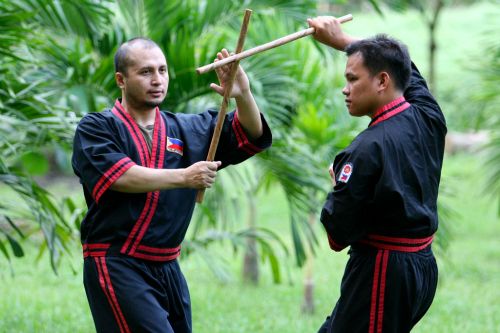
© Andrew Villasis
Arnis is not just a sport, but a martial art that encompasses various forms of improvised weaponry.
With roots in 15th Century Filipino peasantry, the martial art taught farmworkers to use sticks, blades and spears to win out in close combat. When Spanish settlers arrived, the art was adapted to counter European fencing techniques.
Modern arnis includes hand-to-hand techniques, but is still largely focused on blades, adapting commonplace tools into lethal weapons. When Japanese forces invaded The Philippines in World War II, Filipino guerrillas took a deadly toll on occupying troops.
When not fighting unwelcome guests, Arnis masters fought each other in duels. Without any protective equipment worn, the fighters often fought to the death until such bouts were outlawed. Now contestants focus on stick fighting but still refuse armour.
Arnis isn’t just a sport, it’s the legacy of a tough people fighting off oppressive invaders over successive centuries. Don’t mess with arnis!
Buzkashi – Afghanistan
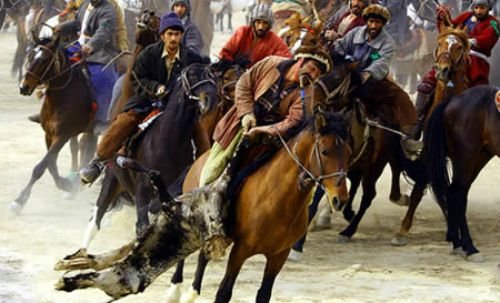
© Afghanpolicy27
Many sports have their origins in warfare; this one is closer than most to a full-scale battle, complete with cavalry charges and pools of blood.
Buzkashi is vaguely similar to polo, in that teams of horseback riders compete to score points over a large open pitch. In other ways it has nothing to do with polo: players are rarely clean-cut, well-dressed aristocrats but bearded warriors. There’s no messing about with mallets or balls: instead the teams battle over a decapitated goat carcass. Most importantly there’s no chivalrous sportsmanship; whilst there are rules about not whipping opponents or kicking them from their horse, most players ignore them.
This is not a sport for the faint of heart, it has such a reputation for rough and tumble that a match was included in Rambo III, just to make Sylvester Stallone look even tougher.
Matches are often played between teams representing local powerbrokers and can last for days. Thousands of villagers will travel across the countryside to get a watch a buzkashi game and cheer on the team of their landlord.
Have you watched or participated in any local sports in your new country? Let us know in the comments!
Article by Andy Scofield
